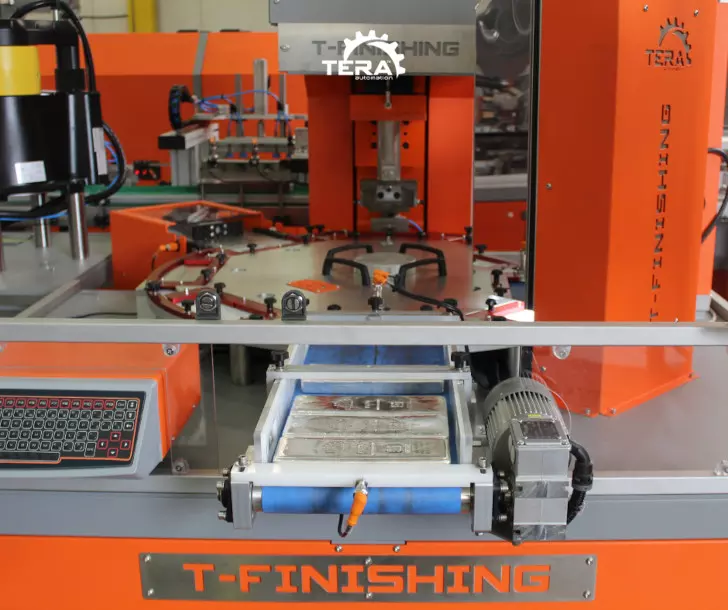
The serialisation of ingots
To be placed on the market, ingots must meet specific quality standards, especially regarding purity and weight; also, they must carry specific information about traceability.
The financial market of precious metals demands that each ingot, no matter its weight, must be mandatorily marked and serialised.
The marking process is a fundamental phase of ingot production, and it is meant to provide specific information such as:
- weight
- manufacturer
- origin
- serial number
The serialisation process involves several steps including:
- the logo marking
- the numbering
- the quality control.
The process of marking and serialising cannot change the core features of ingots - shape, dimension and, most importantly, weight. The techniques applied in the marking and serialisation process cannot alter these parameters.
As we’re always looking for integrated solutions, we exploited our expertise in industrial automation to design a machine that serialises ingots with the highest levels of precision and accuracy, without altering their fundamental characteristics.
The ultimate system for ingot customisation
Out T-Finishing is an integrated system for the serialisation and stamping of precious metals ingots. Behind our T-Finishing lies the idea of an integrated circuit: ingots enter a serialisation circuit and come out ready to be packed.
The true heart of T-Finishing is a round, rotating plate surrounded by other machines for the ingot manufacturing:
- T-Press: 33t hydraulic press for logo stamping
- T-Numbering: dot peen marking unit for numerical serialisation
- T-Photo Viewer: vision system equipped with OCR for quality control
T-Finishing can manufacture ingots:
- 1 oz to 1Kg Gold/Silver
- 400 oz Good Delivery Gold
- 1000 oz Good Delivery Silver
120 to 160 kilobar production per hour.
Microdot marking: maximum precision, no metal loss
To meet the requirements of the financial market and gain credibility and traceability, ingots must have a unique identification code.
Microdot marking is one of the best technologies used for this purpose as it prevents metal removal. Engraving is in fact carried out with an electromagnetic micro-percussion marking stylus which simply compresses the metal.
Maximum control with Optical Character Verification
OCV optical recognition systems use cameras and software to scan and verify the print accuracy of a known text by comparing it with a reference test.
An OCV system, or optical character verification system, is a technology that is also used in the precious metals industry, with the aim of verifying whether the text printed on the outer surface of ingots complies with the required standards.
Scales and Scara robot for maximum efficiency
The input of a T-Finishing is the ingot resulting from a previous melting process which may have compromised one of the most important characteristics for compliance with market standards: the weight.
To overcome this problem, we decided to integrate our T-Finishing with:
- Analytical weight measurement cell: our T-Finishing includes high-precision scales with a resolution of 0,01 g.
- Scara Robot: the Scara robot, which moves an “arm” on the horizontal plane and a “grip” equipped with suction cups on the vertical plane, picks up the ingot to be processed and weighs it. If it does not conform (underweight or overweight) the robot discards it, if it conforms the robot feeds it into the T-Finishing processing circuit.
Industrial automation optimises processes and gives the operator the role of process supervisor. While reducing time, it increases the production capacity and quality standards of the ingots being produced.
Innovation at the service of industry
Our T-Finishing takes care of the entire finishing process in a more precise and waste-free way, without the need for human intervention. The machine operates, supervises and selects conforming ingots, discards non-conforming ones, and hands over the finished product to the operator.
The advantages of an innovative, automated solution like T-Finishing are obvious:
- Finishing large volumes in less time and automatically
- More processes in one compact module
- Increases personnel safety
- Total automation possible with integration of a robot
Optimizing processes and footprints while ensuring maximum performance and precision through industrial automation is what we, as a company, continue to aim for.
